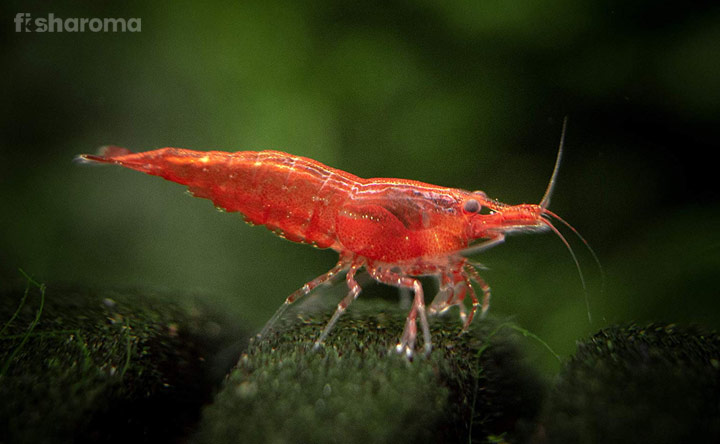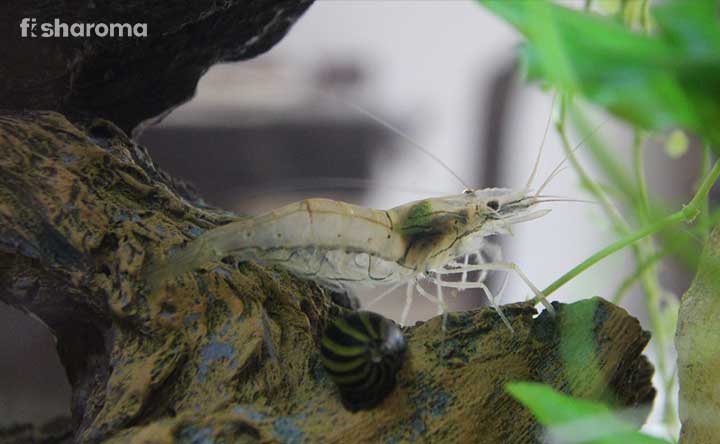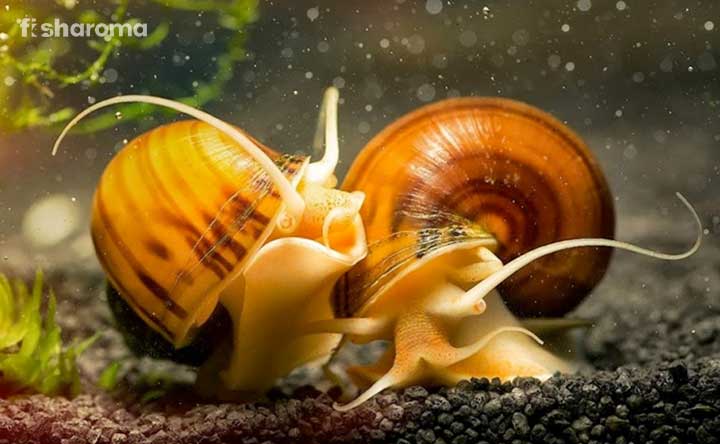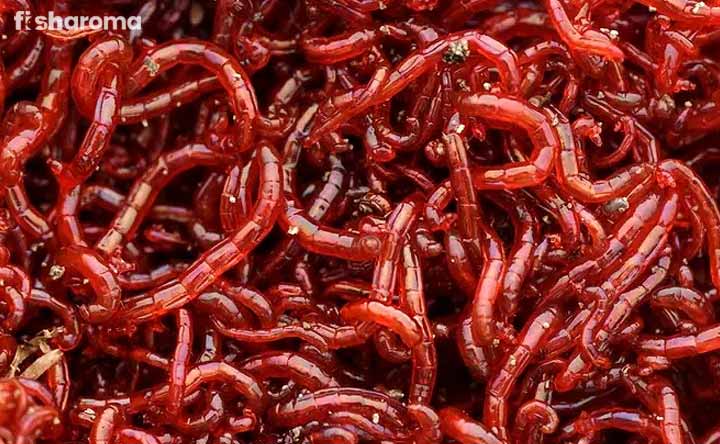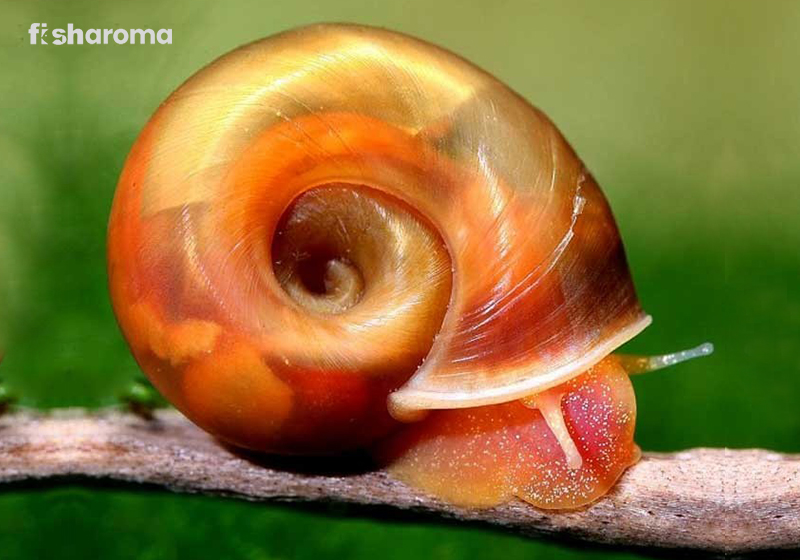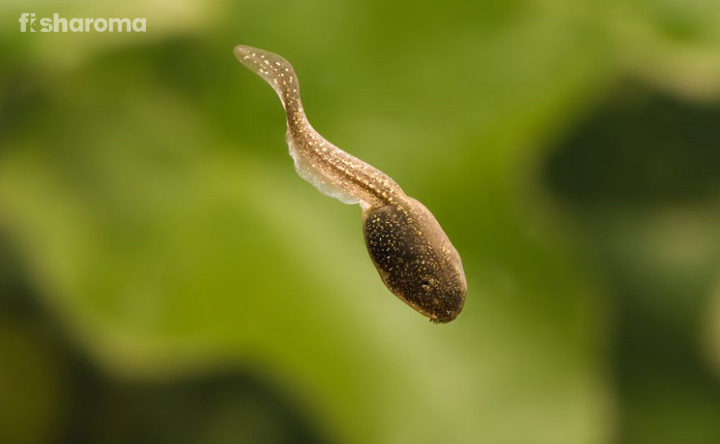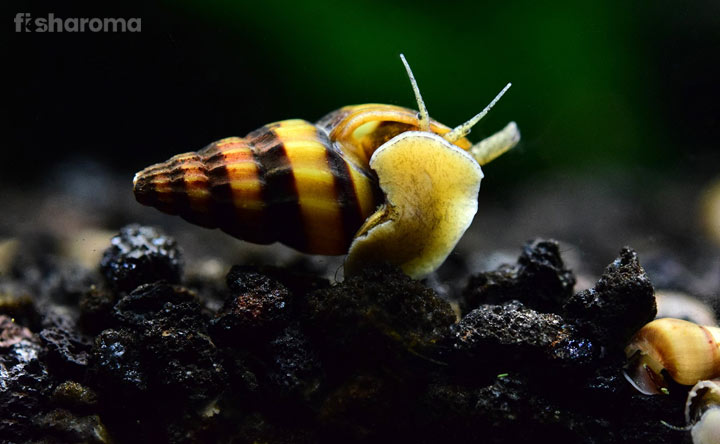Pom Pom Crab: Tank Requirements, Lifespan, Diet, Breeding and Much More
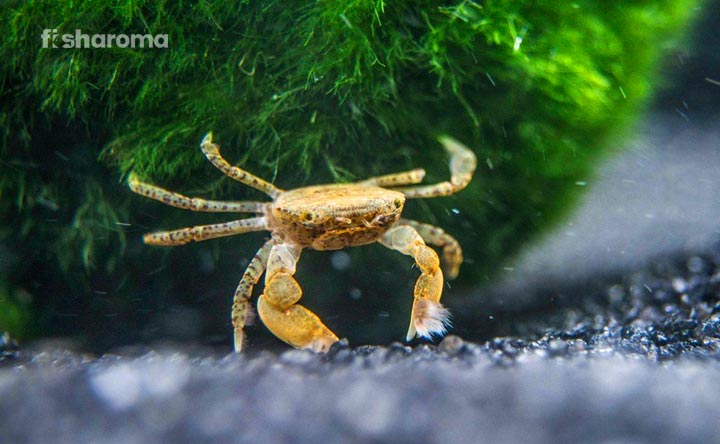
- Origin & Habitat of Freshwater Pom Pom Crab
- Appearance of Freshwater Pom Pom Crab
- Behaviour of Freshwater Pom Pom Crab
- Lifespan of Freshwater Pom Pom Crab
- Diet of Freshwater Pom Pom Crab
- Tank Requirements for Freshwater Pom Pom Crab
- Water Type for Freshwater Pom Pom Crab
- Compatibility of Freshwater Pom Pom Crab
- Breeding of Freshwater Pom Pom Crab
- Freshwater Pom Pom Crab Diseases
- Summary
If you are looking for a change from having regular fish in your aquarium, then it might be a good idea to include aquatic crabs. However, not all crabs are easy to take care of. One that we can recommend you is the Freshwater Pom Pom Crab.
These magnificent creatures are not only a delight to sore eyes but their highly active and low-demanding lifestyle is a dream for an aquatic pet owner. Today, we are going to explore everything related to them – from their diet to their lifespan, from their breeding to their behaviour. We will uncover everything that would help you pet them healthily and easily.
Key Specifications of Freshwater Pom Pom Crab
Take a quick look at some of the key specifications of Freshwater Pom Pom Crab before we deal with each of the aspects in detail.
| Scientific Name | Ptychognathus barbatus |
| Origin | Southeast Asia |
| Lifespan | 1 year |
| Colours | Yellow-brownish with spots |
| Temperament | Peaceful |
| Size | 1” (2.5 cm) |
| Diet | Omnivore |
| Family | Grapsidae |
| Compatibility | Moderately fine |
| Tank Size | 5 gallons (Minimum) |
| Care Level | Easy |
Overview
Freshwater Pom Pom Crabs belong to the Grapsidae family. Their adorable appearance thanks to the ‘pom-pom’ on their claws (more on that in the appearance section) and their mesmerizing behaviour sets them apart from your average aquatic pet.
Their scientific name is Ptychognathus barbatus. However, they are also known by many different aliases such as Hong Kong Crabs and Cheerleading Crabs. These beautiful creatures are not to be confused with their marine counterparts.
They are pretty new to the aquarium hobby scene and there is very limited information on them. But still, we are going to bring everything about them to you so that you are well-equipped to take care of them.
Origin & Habitat of Freshwater Pom Pom Crabs
The distribution of Freshwater Pom Pom Crabs is pretty wide. They are found in the tropical areas of China, India, Indonesia, Japan, Comoros, Malaysia, Taiwan, Australia, New Caledonia and Madagascar.
They are mostly seen dwelling near the mouth of narrow rivers and streams, hiding between rocks and pebbles. The water that they live in is usually very calm and you can find them at a depth of around 0.2 m.
Appearance of Freshwater Pom Pom Crabs
You must be wondering about the origin of their interesting ‘Pom Pom’ name. Well, this has got to do with the hairy tufts growing from their pinchers. These are basically filter fans that resemble the pom-poms of a cheerleader. Their claws, which are known as chelae, hold these filter fans. However, they are rarely used for filter-feeding. Sometimes, they use these filter fans to catch food.
They use their claws extensively to move debris, pick up food and in defending themselves from predators.
With a broad body that has a wide carapace that protects their vital organs, these crustaceans have ten legs including the pincers. Their slender and long legs help them manoeuvre the irregular rocks and pebbles in their vicinity.
They also have a pair of highly sensitive eyes that extend from their body through a stalk. As such, they get to have almost a 360° view, if needed.
Besides, they also have two pairs of antennae that are situated near their eyes. One pair is shorter, which is used to smell and taste while the other longer pair is used to feel the ambience.
Just like every other crab, they also have defined plates that vary in shapes and sizes depending on their sex. These plates are also called aprons. While the males have narrow and thin aprons, the females have curved and wide aprons.
Size of Freshwater Pom Pom Crab
These are relatively small-sized crabs, growing not more than an inch (2.5 cm) long.
Colour of Freshwater Pom Pom Crab
Although they don’t boast of a dynamic colour range, they provide a sight to behold with their appearance. Their bodies are usually brown or yellow in colour, which helps them camouflage with their environment. This also assists them in hiding from predators.
Most of them feature speckles of dark brown all over their bodies. Their ‘pom-poms’ are usually brown in colour.
Behaviour of Freshwater Pom Pom Crabs
They may have a small stature, but their personalities are larger-than-life. Extremely active, you would barely find a timid moment from Freshwater Pom Pom Crabs.
Despite that, they are pretty peaceful by nature. Although they don’t damage their surroundings, you would often notice the male Freshwater Pom Pom Crabs sparring with each other.
They are completely aquatic, but can sometimes be seen thriving on land as well. As we stated earlier, they love to burrow and use their powerful claws to push away sand like a bulldozer. Their active nature also makes them brilliant climbers. So, be sure to cover your tank with a lid so that they can’t escape.
Just like any other crustaceans, they also moult. This is when they shed their old exoskeleton and develop a new one to fit their growing body. They stay extremely vulnerable at this stage as the newly-developed shell isn’t hard enough for the first few days. You would find them hiding during this time.
We strongly advise you to remove their old exoskeleton from the tank as soon as possible as it may breakdown in the water and raise the nitrate level, thereby endangering your aquatic pets.
Lifespan of Freshwater Pom Pom Crabs
Unfortunately, Freshwater Pom Pom Crabs have a short lifespan. Even in the healthiest of conditions, they won’t live more than a year.
Diet of Freshwater Pom Pom Crabs
Freshwater Pom Pom Crabs are skilled scavengers. This, added with their omnivorous nature, makes feeding them extremely easy as they will eat anything and everything they find in their vicinity.
In the wild, they mostly rely on plant detritus and algae to satiate themselves. This would come in handy as they will get rid of algae from your tank. They also feed on small worms and crustaceans.
You can also feed them dried foods such as pellets, algae wafers, and flakes. But make sure you moisten them before putting them into the tank. Another thing you need to bear in mind is that dried foods are low in nutrients. So, you can’t rely on them completely.
Occasionally, you need to provide them with live food such as Brine Shrimp and Bloodworm. In addition, you can also feed them blanched vegetables cut into small pieces.
Calcium is one of their primary needs as it helps keep their shells strong. So, provide healthy calcium supplements to them as well.
You can feed them 5-6 times a week. They usually feed themselves with the algae population in your tank.
Tank Requirements for Freshwater Pom Pom Crabs
Let us now find out about their tank requirements. After all, providing them with a healthy environment that reflects their natural habitat is a foremost duty as a pet owner.
Tank Size
You can keep a small group of, let’s say, four Freshwater Pom Pom Crabs in a 5-gallon tank. However, please note that a small tank is much harder to maintain due to how easily the interior environment gets toxic due to lack of adequate space. So, feel free to provide them with a large space if you don’t want to clean the tank frequently.
Tank Lid
This is extremely important since they are great escape artists. So, be sure to invest in a tight lid. Make sure there is at least 4” (10 cm) space between the tank lid and the water surface, in case your crabs want to rise to the top for some fresh air.
Substrate
They prefer a sandy substrate with small rocks over it. Please ensure the sands are of fine grain as it would help them in burrowing.
Filter
A standard filter would suffice as they don’t need a lot of movement in the water they reside in. A sponge filter will get the job done. A regular air pump can be used in their tank as well.
Ornaments
As we suggested earlier, their natural habitat is filled with rocks and pebbles and they need them for hiding. So, include these along with driftwood, artificial castles, caves, and towers in your aquarium. These ornaments are especially needed when they moult.
Presence of Flora
You can keep aquatic plants with these crabs without fearing for your plants getting eaten away. Yes, plant detritus may be part of their diet, but these crabs won’t harm your plants. However, they can uproot delicate small plants. So, keep that in mind.
Floating plants can be a good option. However, make sure that the floating plants don’t cover the entire water surface, thereby blocking air and light to pass into the water.
A major thing that you need to understand here is that if you are using plant fertilizer, then make sure it doesn’t have copper as it can prove fatal for your crabs.
Lighting
Standard aquarium lighting will suffice for these crustaceans.
Cleaning Method
Regular cleaning of the tank would keep the tank environment healthy, which, in turn, would have a positive impact on the health of your crabs. Try to clean the tank every ten days if it is a small tank, and on a monthly basis if it is a mid-sized or large tank.
Don’t use any chemical or soap-based products as that might jeopardize with the health of your crabs. Just dip a soft cloth in lukewarm water and use it to rub the interior walls of your tank. You can put the substrate under running water to get rid of debris. As for the ornaments, use a brush with soft bristles to clean them.
Remember not to aggressively scrape off algae since it is part of their daily diet. So, keep a small portion of the algae population in the tank.
While cleaning the tank, be sure to keep your crabs in a bucket with a lid so that they can’t escape.
Water Type for Freshwater Pom Pom Crabs
Next, it is time to learn the type of water these crustaceans prefer living in.
Temperature
As they are tropical creatures, provide them with slightly warm water. 22 – 28°C (72°F – 82°F) is the ideal range of temperature for the tank water. Use an aquarium heater to maintain this range and an aquarium thermometer (if your heater doesn’t come with one) to keep a track of it.
pH Level
The recommended pH level of the tank water for Freshwater Pom Pom Crabs is 6.8-7.2.
Hardness
The general hardness of the water should be 6-8 dGH while the carbonate hardness of the water should be 2-6 dKH.
Mineral Level
The level of ammonia and nitrite should obviously be zero. Make sure to perform a nitrogen cycle in your tank before introducing your crabs into it. The level of nitrate should be less than 20 ppm. The optimal TDS should be 150-200.
Replacement Procedure
If you have got a small tank, then replace 40% of the tank water on a weekly basis. However, if you have got a mid-sized or large tank, then replace 20% of the tank water on a weekly basis or 40% of the tank water on a monthly basis.
The new batch of the water should have the same parameters (temperature, pH level, hardness, etc.) as that of the existing batch of water.
Compatibility of Freshwater Pom Pom Crabs
Freshwater Pom Pom Crabs can be kept with each other. Despite occasionally engaging in small fights (which are pretty harmless), they are quite amicable with each other.
Suitable Tankmates for Freshwater Pom Pom Crabs
Small, peaceful species can serve as ideal tankmates for Freshwater Pom Pom Crabs. A bunch of other shrimps can also adapt well with these species. As such, the suitable tankmates for Freshwater Pom Pom Crabs are as follows:
- Dwarf Gourami
- Molly
- Pearl Danio
- Neon Tetra
- Ghost Shrimp
- Cherry Shrimp
- Bamboo Shrimp
- Amano Shrimp
Unsuitable Tankmates for Freshwater Pom Pom Crabs
Avoid keeping them with large, aggressive species as they may fall prey to them. Snails should also be avoided since your crabs may eat them.
Breeding of Freshwater Pom Pom Crabs
As with most other crabs, breeding Freshwater Pom Pom Crabs is also extremely difficult. Even though they are freshwater creatures, their larvae need brackish water for developing. The young ones also have to be kept separately for safety purposes.
A pair of one male and one female is needed for breeding. They would have to be kept in a completely clean environment and the temperature of the tank water has to be 82° F (27° C).
The young crabs go through several larval stages before hitting maturity and moving to the freshwater rivers. As such, most people avoid breeding them in captivity and instead buy them from reputed vendors.
Freshwater Pom Pom Crabs Diseases
They are fairly resistant to diseases. However, they can be hit by shell disease, wherein black lesions appear on their carapace. Parasitic and fungal infections can also be seen in few of them.
However, as long as you maintain the proper water parameters and keep a healthy clean environment inside the tank, your crabs will be fine.
Please be sure to quarantine your pets and ornaments before introducing them to the tank as you never know what will bring infection to the tank.
Interesting Facts about Freshwater Pom Pom Crab
- Freshwater Pom Pom Crabs are decapods, meaning they have ten legs.
- Male Freshwater Pom Pom Crabs have a V-shaped section at their undersides.
- The claws and ‘pom-poms’ are also bigger in men.
Summary
Freshwater Pom Pom Crabs are magnificent creatures that are extremely easy to pet. With a small stature and an active demeanour, they are adorable to look at. They are extremely peaceful and have minimal dietary and tank requirements. Breeding them can be, however, next to impossible in a captive environment.
They are an ideal addition to your tank if you are looking for some peaceful, non-fish pets whom you don’t have commit a lot of attention to. Hope our care guide has served you well into taking care of them.
Care Guides of Other Non-Fish Pets
The following articles might interest you as well.
- Amano Shrimp Care Guide: These busy-bodies are one of the most sought-after non-fish pets that you can bring home due to how easy they are to care for.
- Ghost Shrimp Care Guide: Despite a fearful name, they are pretty peaceful and calm by nature and will keep you captivated with their magical appearance.
- Mexican Dwarf Crayfish Care Guide: Delightful to look at, these bright-orange crustaceans are extremely hardy and can adapt to a wide range of tank environments.

